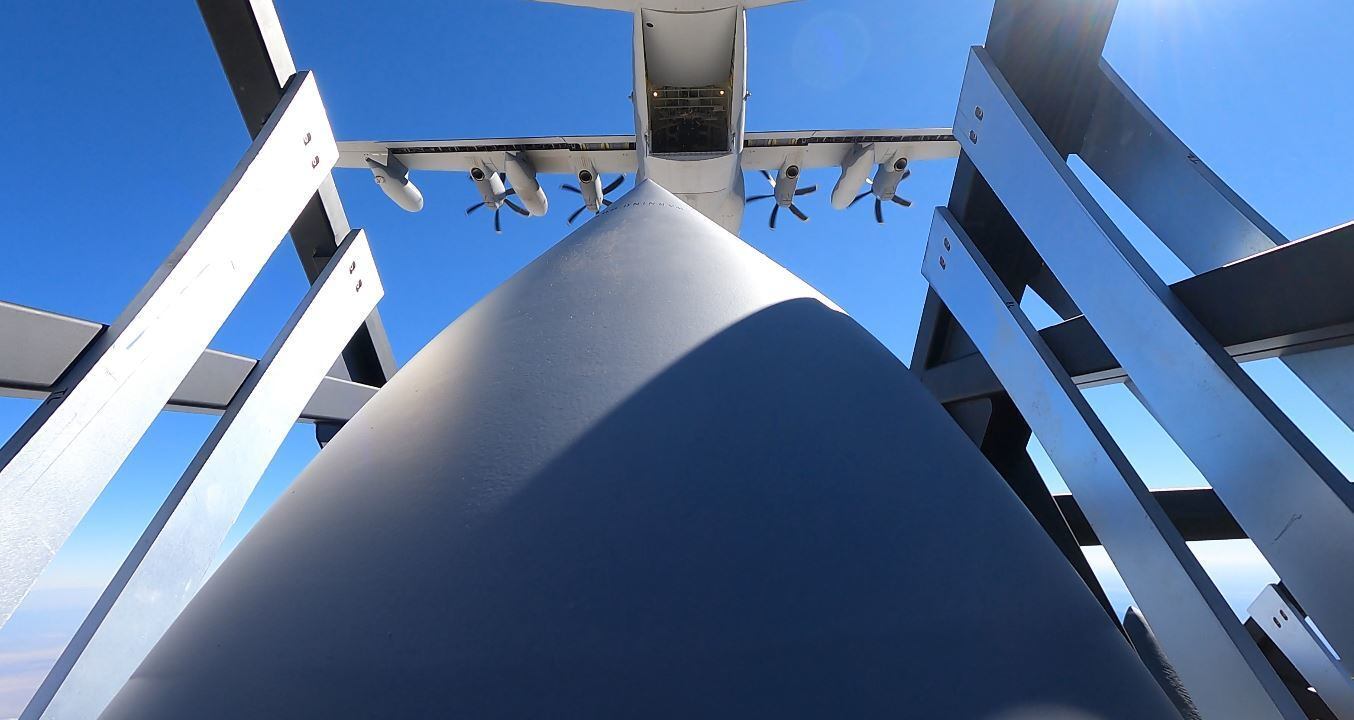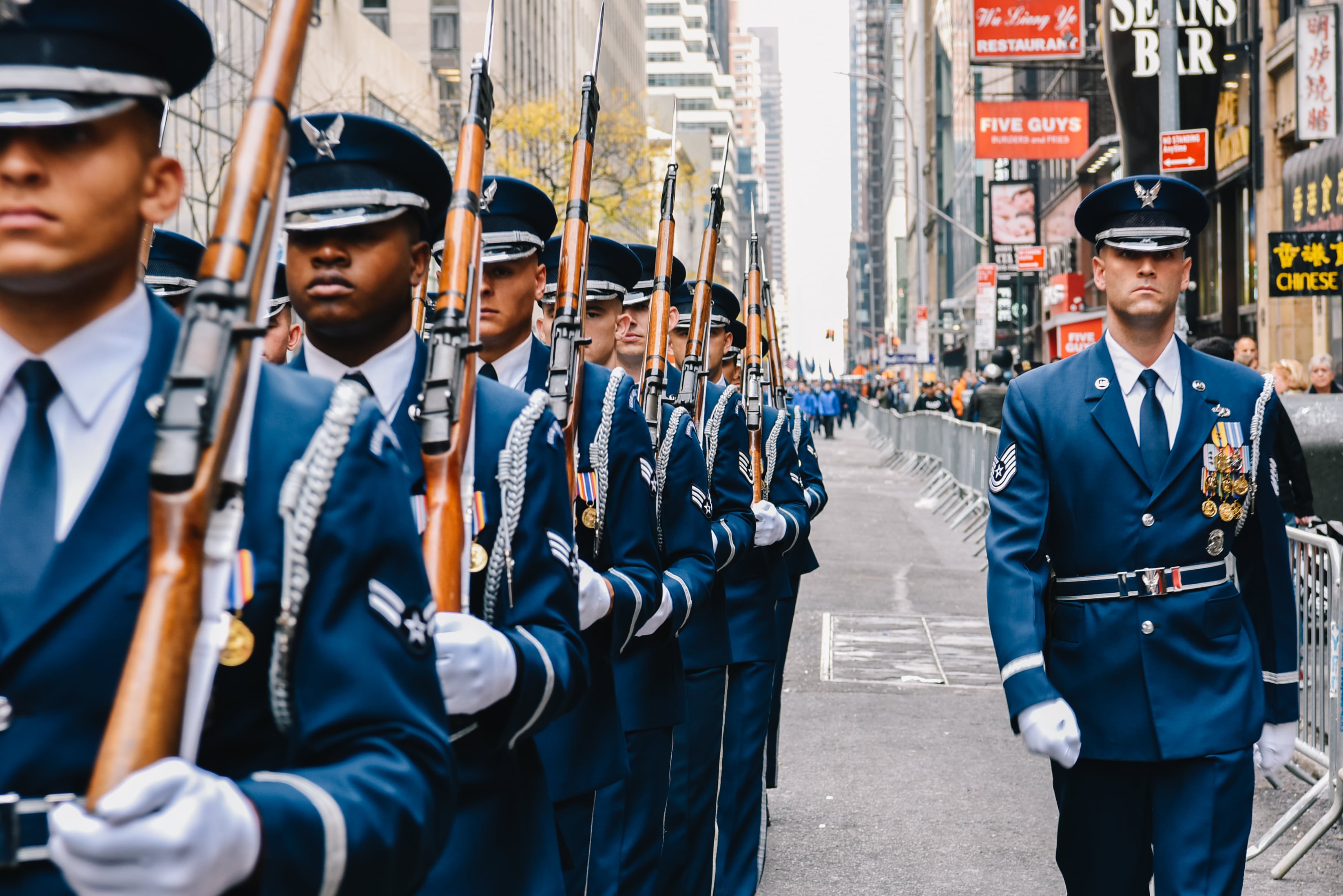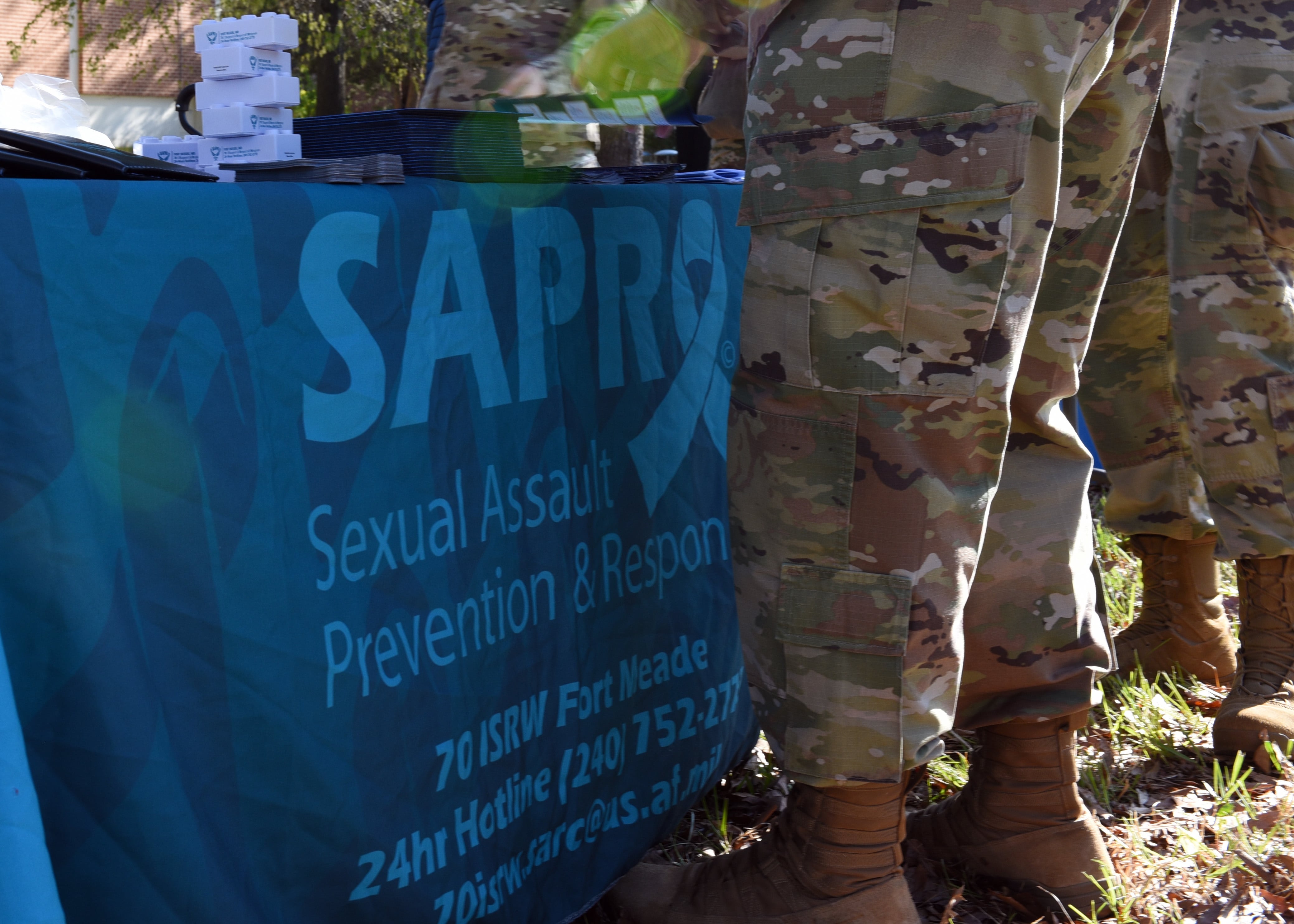WASHINGTON — The U.S. Air Force on Thursday destroyed a target in the Gulf of Mexico with a cruise missile launched from the back of a cargo aircraft, marking the first live-fire test of its Rapid Dragon program.
The final flight test of Rapid Dragon, which took place at the overwater test range at Eglin Air Force Base in Florida, marks a step forward in the Air Force Strategic Development Planning and Experimentation office’s “bomb bay in a box” effort to develop a palletized munition system.
The Air Force Research Laboratory said in a Thursday release the program could lead to the U.S. and allies being able to turn cargo aircraft into heavily armed bomb trucks, as well as give combatant commanders more firepower to turn on enemy targets from a safe distance.
Last month, the Air Force carried out a similar test with an unarmed long-range cruise missile separation test vehicle, which had no warhead or engine.
This time, the cruise missile carried by an Air Force Special Operations Command MC-130J Commando II aircraft was armed, AFRL said in the release. The battle management system on the MC-130 received new targeting data in-flight, and then that data was routed to the cruise missile flight test vehicle. This was the first time new targeting data was received and uploaded to a live cruise missile during a flight.
When the MC-130 had reached the drop zone over the Gulf of Mexico, its crew airdropped the palletized munition system containing a single cruise missile, and three weights simulating the mass and shape of cruise missiles.
A parachute deployed to stabilize the falling Rapid Dragon system, and the missile and three dummy weights began to release sequentially to avoid collisions. The way in which the cruise missile separated from the deployment box this time was “unconventional,” AFRL said — it deployed vertically, with its nose down.
The cruise missile immediately sprung its wings and tail, got aerodynamic control of itself, fired up its engine and pulled up under the engine’s power. It then headed toward its target, which it destroyed upon impact, AFRL said.
Now that AFRL proved it can deploy a cruise missile in this way, it hopes to show the palletized weapon system can work with other aircraft. The next Rapid Dragon experiment is scheduled for spring 2022 in a live-fire test with a cruise missile from a C-17 Globemaster.
AFRL said the retargeting methods developed for Rapid Dragon are meant to be adaptable to other strike and mobility platforms. Airmen would be able to roll Rapid Dragon on or off a mobility aircraft without modifying the plane, AFRL said last month.
The Air Force hopes to further broaden Rapid Dragon’s capabilities so the carriage can house additional weapons systems and multiple types of weapons. Two years from now, the Air Force wants to bring this program from a developmental prototype to an operational prototype.
AFRL pointed to the quick development of Rapid Dragon as an example of how government and industry can quickly produce results when collaborating. This live-fire test came five months after the Rapid Dragon team conducted a system-level flight test, which itself came 10 months after the Air Force and its industry partners designed it.
Rapid Dragon has held five flight tests on three different aircraft — the MC-130J, the EC-130SJ and the C-17A — over the last five months.
“This type of experimentation campaign, that address[es] capability gaps and demonstrates transformative efforts, helps us shape future requirements and reduces timeline to fielding,” AFRL Commander Maj. Gen. Heather Pringle said in the release. “This approach ultimately enables a rapid fielding alternative to traditional lengthy acquisition timelines.”
Other contributors to the recent test include the Naval Surface Warfare Center Dahlgren, the Standoff Munitions Application Center, Lockheed Martin Missiles and Fire Control, Systima Technologies, R4 Integration, and the Safran Electronics and Defense subsidiary Parachutes USA.
Stephen Losey is the air warfare reporter for Defense News. He previously covered leadership and personnel issues at Air Force Times, and the Pentagon, special operations and air warfare at Military.com. He has traveled to the Middle East to cover U.S. Air Force operations.










